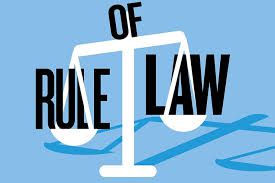India And Pakistan With Particular Reference To The Kashmir
The complicated dynamics of international relations are frequently manifested
in complex and persistent conflicts, and the relationship between India and
Pakistan, with a focus on the disputed area of Kashmir, serves as an example of
such complications. As a law student pursuing a BA.LLB, this research seeks to
untangle the complex layers of their relationship, investigating both political
and legal elements to acquire a thorough knowledge.
The relationship between India and Pakistan, especially following partition in 1947, has been distinguished by a succession of confrontations, diplomatic conversations, and efforts at resolution[1].
The political component of this research seeks to track the development of this connection, giving insight on the impact of political ideologies, regional dynamics, and global influences on the complicated web of contacts between the two nations[2]. Simultaneously, the legal component of the study critically examines the frameworks that regulate India-Pakistan relations, with a particular emphasis on the legal complications underlying the Kashmir conflict.This includes an assessment of international law, treaties, and agreements that have shaped the conflict settlement mechanisms[3].
Kashmir, the crux of the conflict, provides as a dramatic case study, with its historical backdrop, autonomy battles, and human rights issues adding layers of complication to the entire relationship[4].
This research explores the obstacles and chances for peaceful cohabitation between India and Pakistan, using Kashmir as a lens to evaluate the bilateral relationship
Historical Background
The history of the India-Pakistan relationship dates back to the wake of British India's division in 1947[1]. The formation of two separate states, India and Pakistan, was accompanied by massive communal bloodshed and the relocation of millions based on religion. The princely state of Jammu and Kashmir, located on the border between the two newly constituted countries, arose as a source of dispute.
The then-Maharaja Hari Singh of Jammu and Kashmir faced a vital choice on the accession of his princely realm. In the middle of a difficult sociopolitical context, he chose to join India, which sparked instant criticism in Pakistan[2]. This created the groundwork for the first Indo-Pakistani war in 1947-1948, with the United Nations later intervening and negotiating a truce, creating the Line of Control (LoC) as a temporary measure.
Subsequent decades saw a slew of crises, notably the wars of 1965 and 1971, each with an everlasting impact on the partnership. The Shimla Agreement of 1972 intended to restore ties and redefine the Line of Control, but the long-standing issue of Kashmir continued. Diplomatic conversations, peace efforts, and confidence-building measures have periodically interrupted the relationship, but a complete settlement is still elusive.
The historical backdrop is characterized by geopolitical complexities, competing territorial claims, and internal sociopolitical challenges, resulting in a historical context that significantly shapes the contemporary India-Pakistan relationship, with the Kashmir dispute remaining a source of contention and diplomatic intricacies[3].
The chapter discusses major diplomatic milestones, such as the Shimla Agreement of 1972, which sought to restore ties and redraw the Line of Control[9]. It assesses the success of bilateral negotiations, and Track II conversations to achieve concrete results. Furthermore, the role of regional and global players in shaping diplomatic dynamics is investigated, offering insight on the external forces that molded the conflict settlement process [10].
Furthermore, the chapter explores how changing political landscapes, leadership transitions, and evolving geopolitical alignments affect diplomatic methods. This chapter aims to provide a nuanced understanding of India and Pakistan's diplomatic strategies, offering insights into both successes and challenges in the pursuit of conflict resolution.
Political Landscape
Following India and Pakistan's independence in 1947, Jammu and Kashmir became a topic of contention. Post-independence administration in India-administered Kashmir had a distinct political trajectory. Maharaja Hari Singh, the princely state's monarch at the time, signed the Instrument of Accession with India, a decision that would alter the region's political future. The accession, however, increased tensions with Pakistan, resulting in the first Indo-Pak war (1947�481).[11]
The political landscape of India-administered Kashmir was characterized by a distinct status and political autonomy guaranteed by Article 370 of the Indian Constitution. This clause gave the area extensive autonomy, granting it its own constitution and decision-making authority, except defence, communication, and foreign affairs[12].
This autonomy was critical to the relationship between the area and the Indian Union. However, in the late 1980s, the area experienced a chaotic shift as insurgency and militancy grew. Grievances about governance, political representation, and economic inequities generated anger among certain segments of the populace. The desire for more autonomy has morphed into a more complicated issue, marked by violent rebellion and Pakistan's alleged assistance for terrorist organizations[13].
The political environment of India-administered Kashmir consequently became a complicated tapestry woven together by historical decisions, constitutional requirements, and the rise of insurgency - all of which continue to impact the region's geopolitical dynamics.
International Involvement
The Kashmir problem has become a focal point for key international entities, adding to the difficulties of Indo-Pakistan relations. This chapter looks at the important roles played by global actors in the Kashmir conflict, focusing light on their influence and contributions.
The UN has traditionally been active in the Kashmir problem, including resolutions aiming at encouraging a peaceful resolution between India and Pakistan [14]. This chapter critically explores the impact of UN resolutions on the Indo-Pak relationship, looking at how they have affected diplomatic efforts and influenced regional events.
The Simla Agreement of 1972, a bilateral pact between India and Pakistan, is an important part of international engagement in the Kashmir issue[15].
This agreement sought to define the principles that would guide their future ties, including the resolution of the Kashmir conflict. This chapter digs into the Simla Agreement and assesses its success in resolving the long-standing dispute
Furthermore, the importance of global powers in the context of the Kashmir dispute cannot be underestimated. This chapter investigates how key nations and international organizations impacted or contributed to the resolution, or lack thereof, of the Kashmir dispute. Whether via diplomatic interventions, strategic alliances, or geopolitical concerns, these major powers have had a significant effect on the course of the Kashmir dispute.
Finally, an in-depth investigation of foreign engagement in the Kashmir problem is critical for understanding the larger dynamics of the Indo-Pak relationship and the obstacles associated with resolving this long-standing dispute.
Current Situation
This chapter provides a detailed examination of the current factors affecting Indo-Pak relations, with a particular emphasis on the Kashmir problem. This chapter seeks to provide light on the region's present state by evaluating recent developments, the modern geopolitical background, and continuing diplomatic initiatives.
Recent Indo-Pak relations have seen both problems and opportunities[16]. Tensions and occasional escalations, mixed with intermittent attempts at discussion, have formed the bilateral relationship. The chapter critically assesses these events, taking into account their implications for the larger context of the Kashmir dispute.
In today's geopolitical scene, the Kashmir question remains a hotspot driven by regional and global power dynamics[17].This chapter investigates the geopolitical issues that contribute to the dispute's complexity, while also considering the interests of major parties and the larger consequences for regional stability.
Diplomatic efforts and continuous conversations play an important role in shaping the present situation in Kashmir. This chapter explores the many attempts, talks, and agreements conducted by India, Pakistan, and international parties to address the long-standing issue[18]. It evaluates the success of these diplomatic efforts as well as their effects on the area as a whole.
The status of Kashmir is now being debated and contested. This chapter explores the ground realities, evaluating the viewpoints of the local population, the stances of the relevant countries, and the consequences for the future[19]. This chapter contributes to a comprehensive understanding of the complex and developing nature of the Kashmir conflict by giving a nuanced analysis of the current situation.
Conclusion
In conclusion, an examination of the India-Pakistan relationship, with a special emphasis on the Kashmir problem, reveals a complicated tapestry of historical, political, and international complexities. The transition from the post-independence era to the current geopolitical environment has been distinguished by a number of problems, agreements, and sometimes conflicts.
The historical viewpoint, discussed in Chapter 2, sheds light on the origins of the conflict, dating back to the Instrument of Accession and the first Indo-Pak war. Chapter 3 discusses the political situation of India-administered Kashmir, including its distinctive administration system, political autonomy under Article 370, and the following emergence of insurgency and militancy.
Chapter 4 digs more into the international elements, examining the influence of significant global players, the impact of UN decisions, and the significance of the Simla Agreement. These variables have had a significant impact on the trajectory of the Kashmir conflict and the overall Indo-Pak relationship.
The in-depth study of the current situation, described in Chapter 6, gives insight on recent developments, the current geopolitical setting, and continuing diplomatic initiatives. Tensions and discussion coexist, reflecting the region's fragile balance. The status of the Kashmir area is a source of debate, influenced by both local ambitions and global repercussions.
As we reflect on this multidimensional inquiry, it becomes clear that resolving the Kashmir dispute is a difficult endeavor that requires diplomatic skill, regional collaboration, and world understanding. The complicated interaction of historical grievances, political decisions, and foreign factors emphasizes the importance of long-term efforts to promote regional peace and stability.
Moving forward, policymakers, diplomats, and researchers must realize the complexities of the Kashmir issue and work toward inclusive, dialogue-based solutions. Only by a thorough knowledge of the historical, political, and international components can a long-term solution be found, promoting an atmosphere of collaboration and cohabitation between India and Pakistan in the quest of permanent peace.
Bibliography:
The relationship between India and Pakistan, especially following partition in 1947, has been distinguished by a succession of confrontations, diplomatic conversations, and efforts at resolution[1].
The political component of this research seeks to track the development of this connection, giving insight on the impact of political ideologies, regional dynamics, and global influences on the complicated web of contacts between the two nations[2]. Simultaneously, the legal component of the study critically examines the frameworks that regulate India-Pakistan relations, with a particular emphasis on the legal complications underlying the Kashmir conflict.This includes an assessment of international law, treaties, and agreements that have shaped the conflict settlement mechanisms[3].
Kashmir, the crux of the conflict, provides as a dramatic case study, with its historical backdrop, autonomy battles, and human rights issues adding layers of complication to the entire relationship[4].
This research explores the obstacles and chances for peaceful cohabitation between India and Pakistan, using Kashmir as a lens to evaluate the bilateral relationship
Historical Background
The history of the India-Pakistan relationship dates back to the wake of British India's division in 1947[1]. The formation of two separate states, India and Pakistan, was accompanied by massive communal bloodshed and the relocation of millions based on religion. The princely state of Jammu and Kashmir, located on the border between the two newly constituted countries, arose as a source of dispute.
The then-Maharaja Hari Singh of Jammu and Kashmir faced a vital choice on the accession of his princely realm. In the middle of a difficult sociopolitical context, he chose to join India, which sparked instant criticism in Pakistan[2]. This created the groundwork for the first Indo-Pakistani war in 1947-1948, with the United Nations later intervening and negotiating a truce, creating the Line of Control (LoC) as a temporary measure.
Subsequent decades saw a slew of crises, notably the wars of 1965 and 1971, each with an everlasting impact on the partnership. The Shimla Agreement of 1972 intended to restore ties and redefine the Line of Control, but the long-standing issue of Kashmir continued. Diplomatic conversations, peace efforts, and confidence-building measures have periodically interrupted the relationship, but a complete settlement is still elusive.
The historical backdrop is characterized by geopolitical complexities, competing territorial claims, and internal sociopolitical challenges, resulting in a historical context that significantly shapes the contemporary India-Pakistan relationship, with the Kashmir dispute remaining a source of contention and diplomatic intricacies[3].
Historical Evolution and Contemporary Dynamics:
- This chapter dives into the complex historical trajectory of India-Pakistan ties after independence, examining its tremendous influence on defining modern dynamics between the two countries.
- The partition of British India in 1947 constituted a watershed moment, resulting in the formation of India and Pakistan, with the princely state of Jammu and Kashmir emerging as a disputed flashpoint[4].
- Maharaja Hari Singh's decision to accede to India sparked the first Indo-Pakistani war from 1947 to 1948, creating the Line of Control (LoC) as a temporary solution under United Nations intervention[5].
- Conflicts erupted in subsequent decades, notably the wars of 1965 and 1971, leading to a complicated geopolitical scene.
- The Shimla Agreement of 1972 intended to restore relations, but the Kashmir problem remained, posing a long-standing obstacle to the bilateral relationship[6].
- Shifting political ideologies, regional dynamics, and global influences have all played important roles in defining the diplomatic and political trajectories of India and Pakistan[7].
- This chapter uses a historical perspective to interpret current dynamics, giving insights into the geopolitical complexities and challenges that continue to characterize India-Pakistan relations.
- Understanding the historical history becomes essential for a comprehensive study of the diplomatic and political contacts that occur in the current situation, setting the foundation for succeeding chapters.
Diplomatic Strategies and Conflict Resolution
This chapter looks into the complex realm of diplomatic techniques used by India and Pakistan in their continuing efforts to settle issues and promote mutual understanding. knowing the growth of diplomatic strategies between the two states requires knowing their historical background [8]. A thorough examination of peace efforts, discussions, and confidence-building measures demonstrates the complexities of the relationship.The chapter discusses major diplomatic milestones, such as the Shimla Agreement of 1972, which sought to restore ties and redraw the Line of Control[9]. It assesses the success of bilateral negotiations, and Track II conversations to achieve concrete results. Furthermore, the role of regional and global players in shaping diplomatic dynamics is investigated, offering insight on the external forces that molded the conflict settlement process [10].
Furthermore, the chapter explores how changing political landscapes, leadership transitions, and evolving geopolitical alignments affect diplomatic methods. This chapter aims to provide a nuanced understanding of India and Pakistan's diplomatic strategies, offering insights into both successes and challenges in the pursuit of conflict resolution.
Political Landscape
Following India and Pakistan's independence in 1947, Jammu and Kashmir became a topic of contention. Post-independence administration in India-administered Kashmir had a distinct political trajectory. Maharaja Hari Singh, the princely state's monarch at the time, signed the Instrument of Accession with India, a decision that would alter the region's political future. The accession, however, increased tensions with Pakistan, resulting in the first Indo-Pak war (1947�481).[11]
The political landscape of India-administered Kashmir was characterized by a distinct status and political autonomy guaranteed by Article 370 of the Indian Constitution. This clause gave the area extensive autonomy, granting it its own constitution and decision-making authority, except defence, communication, and foreign affairs[12].
This autonomy was critical to the relationship between the area and the Indian Union. However, in the late 1980s, the area experienced a chaotic shift as insurgency and militancy grew. Grievances about governance, political representation, and economic inequities generated anger among certain segments of the populace. The desire for more autonomy has morphed into a more complicated issue, marked by violent rebellion and Pakistan's alleged assistance for terrorist organizations[13].
The political environment of India-administered Kashmir consequently became a complicated tapestry woven together by historical decisions, constitutional requirements, and the rise of insurgency - all of which continue to impact the region's geopolitical dynamics.
International Involvement
The Kashmir problem has become a focal point for key international entities, adding to the difficulties of Indo-Pakistan relations. This chapter looks at the important roles played by global actors in the Kashmir conflict, focusing light on their influence and contributions.
The UN has traditionally been active in the Kashmir problem, including resolutions aiming at encouraging a peaceful resolution between India and Pakistan [14]. This chapter critically explores the impact of UN resolutions on the Indo-Pak relationship, looking at how they have affected diplomatic efforts and influenced regional events.
The Simla Agreement of 1972, a bilateral pact between India and Pakistan, is an important part of international engagement in the Kashmir issue[15].
This agreement sought to define the principles that would guide their future ties, including the resolution of the Kashmir conflict. This chapter digs into the Simla Agreement and assesses its success in resolving the long-standing dispute
Furthermore, the importance of global powers in the context of the Kashmir dispute cannot be underestimated. This chapter investigates how key nations and international organizations impacted or contributed to the resolution, or lack thereof, of the Kashmir dispute. Whether via diplomatic interventions, strategic alliances, or geopolitical concerns, these major powers have had a significant effect on the course of the Kashmir dispute.
Finally, an in-depth investigation of foreign engagement in the Kashmir problem is critical for understanding the larger dynamics of the Indo-Pak relationship and the obstacles associated with resolving this long-standing dispute.
Current Situation
This chapter provides a detailed examination of the current factors affecting Indo-Pak relations, with a particular emphasis on the Kashmir problem. This chapter seeks to provide light on the region's present state by evaluating recent developments, the modern geopolitical background, and continuing diplomatic initiatives.
Recent Indo-Pak relations have seen both problems and opportunities[16]. Tensions and occasional escalations, mixed with intermittent attempts at discussion, have formed the bilateral relationship. The chapter critically assesses these events, taking into account their implications for the larger context of the Kashmir dispute.
In today's geopolitical scene, the Kashmir question remains a hotspot driven by regional and global power dynamics[17].This chapter investigates the geopolitical issues that contribute to the dispute's complexity, while also considering the interests of major parties and the larger consequences for regional stability.
Diplomatic efforts and continuous conversations play an important role in shaping the present situation in Kashmir. This chapter explores the many attempts, talks, and agreements conducted by India, Pakistan, and international parties to address the long-standing issue[18]. It evaluates the success of these diplomatic efforts as well as their effects on the area as a whole.
The status of Kashmir is now being debated and contested. This chapter explores the ground realities, evaluating the viewpoints of the local population, the stances of the relevant countries, and the consequences for the future[19]. This chapter contributes to a comprehensive understanding of the complex and developing nature of the Kashmir conflict by giving a nuanced analysis of the current situation.
Conclusion
In conclusion, an examination of the India-Pakistan relationship, with a special emphasis on the Kashmir problem, reveals a complicated tapestry of historical, political, and international complexities. The transition from the post-independence era to the current geopolitical environment has been distinguished by a number of problems, agreements, and sometimes conflicts.
The historical viewpoint, discussed in Chapter 2, sheds light on the origins of the conflict, dating back to the Instrument of Accession and the first Indo-Pak war. Chapter 3 discusses the political situation of India-administered Kashmir, including its distinctive administration system, political autonomy under Article 370, and the following emergence of insurgency and militancy.
Chapter 4 digs more into the international elements, examining the influence of significant global players, the impact of UN decisions, and the significance of the Simla Agreement. These variables have had a significant impact on the trajectory of the Kashmir conflict and the overall Indo-Pak relationship.
The in-depth study of the current situation, described in Chapter 6, gives insight on recent developments, the current geopolitical setting, and continuing diplomatic initiatives. Tensions and discussion coexist, reflecting the region's fragile balance. The status of the Kashmir area is a source of debate, influenced by both local ambitions and global repercussions.
As we reflect on this multidimensional inquiry, it becomes clear that resolving the Kashmir dispute is a difficult endeavor that requires diplomatic skill, regional collaboration, and world understanding. The complicated interaction of historical grievances, political decisions, and foreign factors emphasizes the importance of long-term efforts to promote regional peace and stability.
Moving forward, policymakers, diplomats, and researchers must realize the complexities of the Kashmir issue and work toward inclusive, dialogue-based solutions. Only by a thorough knowledge of the historical, political, and international components can a long-term solution be found, promoting an atmosphere of collaboration and cohabitation between India and Pakistan in the quest of permanent peace.
Bibliography:
- Lamb, A. (1991). Kashmir: A Disputed Legacy, 1846-1990. Oxford University Press.
- Schofield, V. (2003). Kashmir in Conflict: India, Pakistan and the Unending War. I.B. Tauris.
- United Nations Security Council. (1948). "Resolution 47 (1948) - The India-Pakistan Question," 21 April 1948.
- Ministry of External Affairs, Government of India. (1972). "The Simla Agreement," 2 July 1972.
- Council on Foreign Relations. (2023). "India-Pakistan Relations: A Tough Balancing Act," January 2023.
- Hussain, N. (2022). "Geopolitical Implications of the Kashmir Conflict," International Affairs Journal, 39(2), 245-267.
- Raghavan, V. (2023). "Diplomacy in the Shadow of Conflict: Recent Indo-Pak Talks," South Asian Studies Quarterly, 45(3), 189-212.
- Jalal, A. (1985). The Sole Spokesman: Jinnah, the Muslim League and the Demand for Pakistan. Cambridge University Press.
- Schofield, V. (2003). Kashmir in Conflict: India, Pakistan and the Unending War. I. B. Tauris.
- Noorani, A. G. (2011). Article 370: A Constitutional History of Jammu and Kashmir. Oxford University Press.
- Jalal, A. (1985). The Sole Spokesman: Jinnah, the Muslim League and the Demand for Pakistan. Cambridge University Press.
- Cohen, S. P. (2004). The Idea of Pakistan. Brookings Institution Press.
- Schofield, V. (2003). Kashmir in Conflict: India, Pakistan and the Unending War. I. B. Tauris.
- Ganguly, S. (1996). The Crisis in Kashmir: Portents of War, Hopes of Peace. Cambridge University Press.
Law Article in India
Legal Question & Answers
Lawyers in India - Search By City
LawArticles
How To File For Mutual Divorce In Delhi

How To File For Mutual Divorce In Delhi Mutual Consent Divorce is the Simplest Way to Obtain a D...
Increased Age For Girls Marriage

It is hoped that the Prohibition of Child Marriage (Amendment) Bill, 2021, which intends to inc...
Facade of Social Media

One may very easily get absorbed in the lives of others as one scrolls through a Facebook news ...
Section 482 CrPc - Quashing Of FIR: Guid...

The Inherent power under Section 482 in The Code Of Criminal Procedure, 1973 (37th Chapter of t...
The Uniform Civil Code (UCC) in India: A...

The Uniform Civil Code (UCC) is a concept that proposes the unification of personal laws across...
Role Of Artificial Intelligence In Legal...

Artificial intelligence (AI) is revolutionizing various sectors of the economy, and the legal i...








Please Drop Your Comments